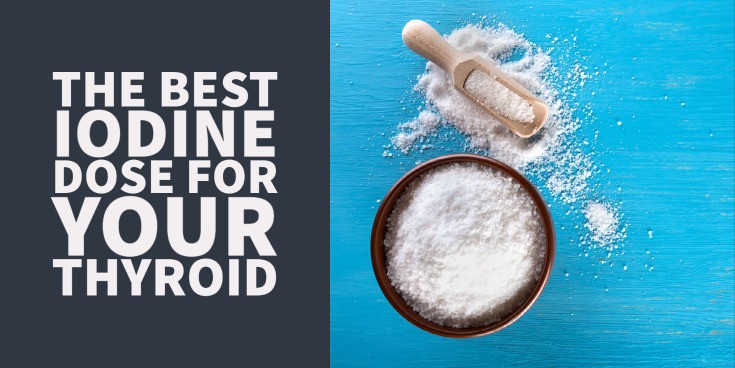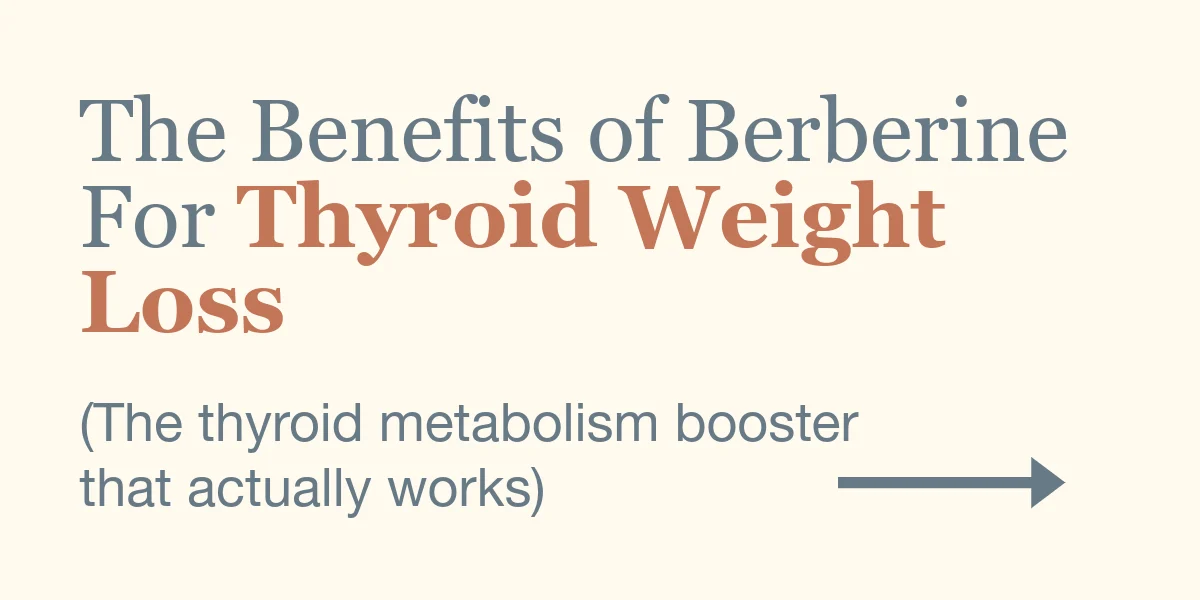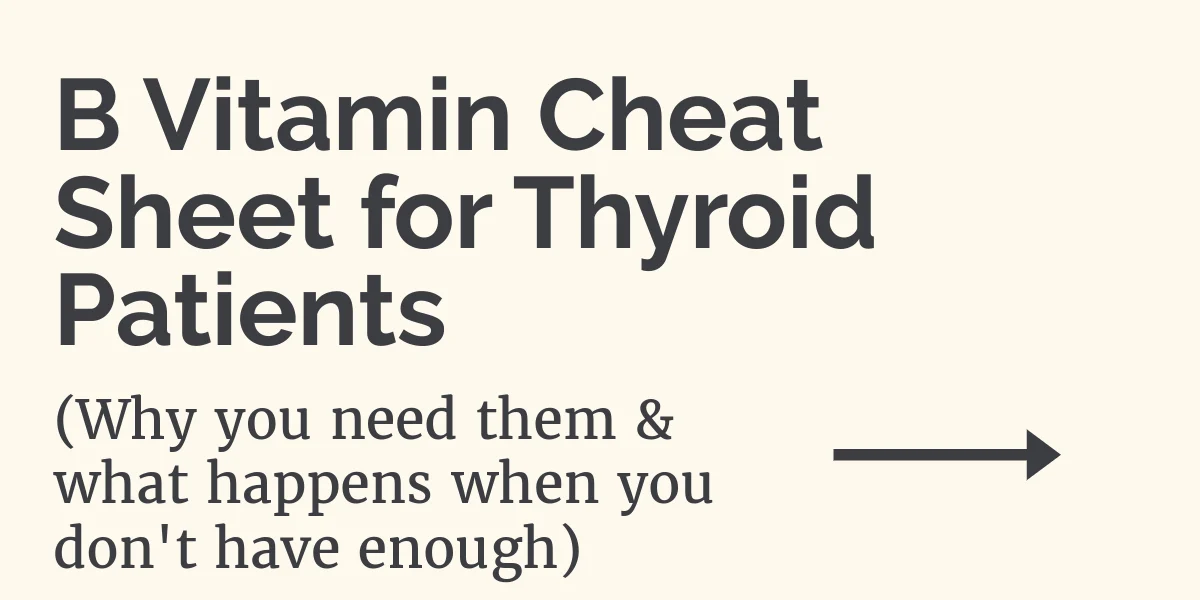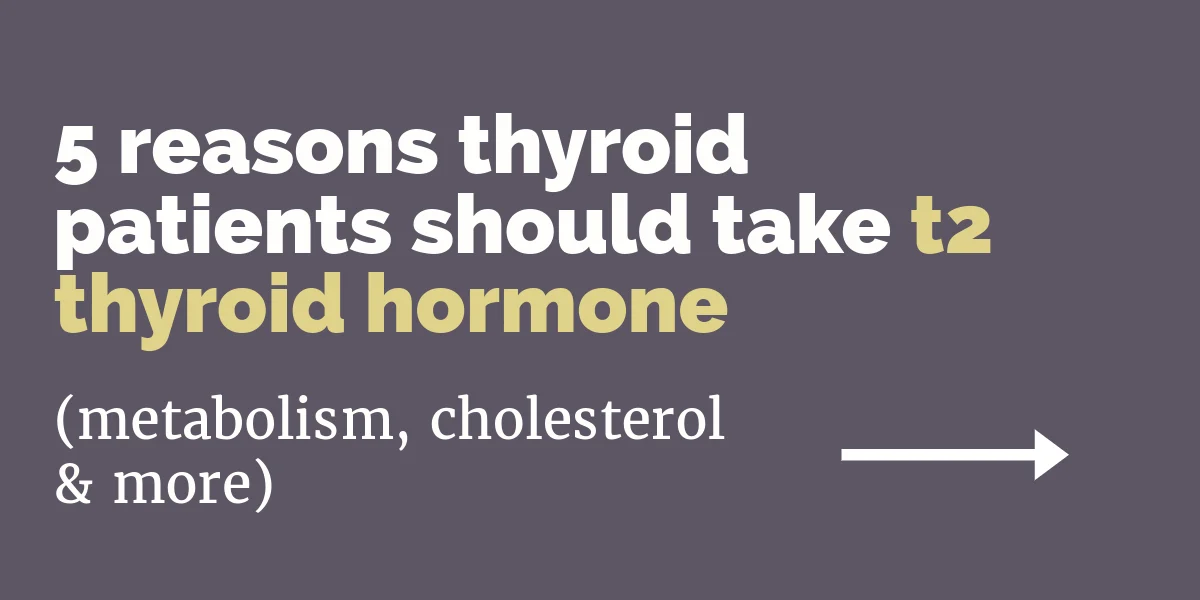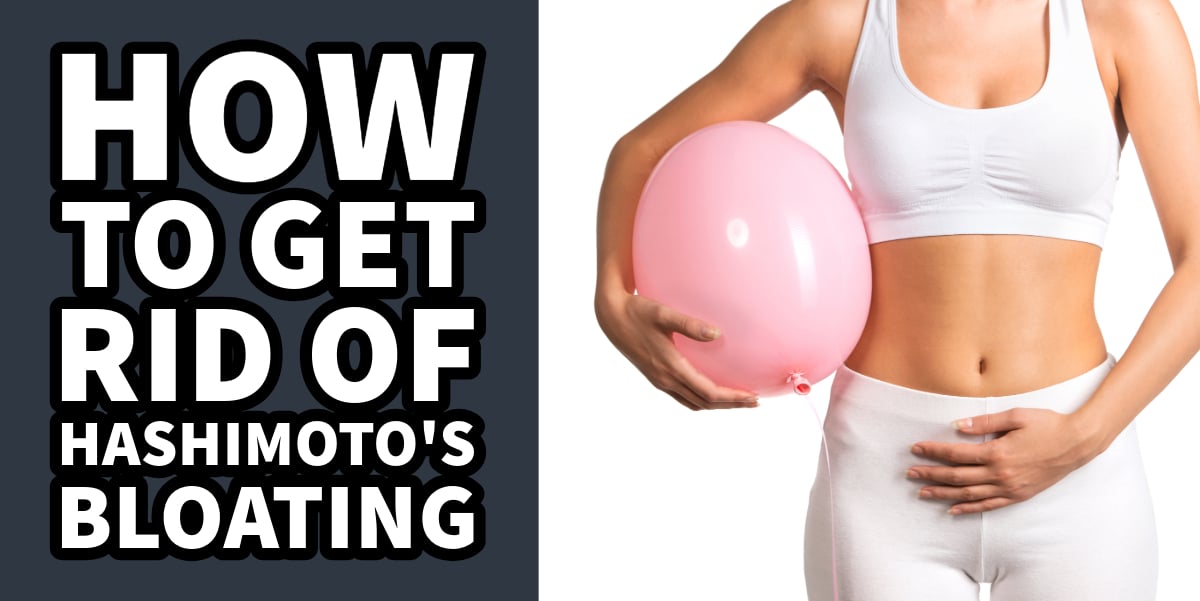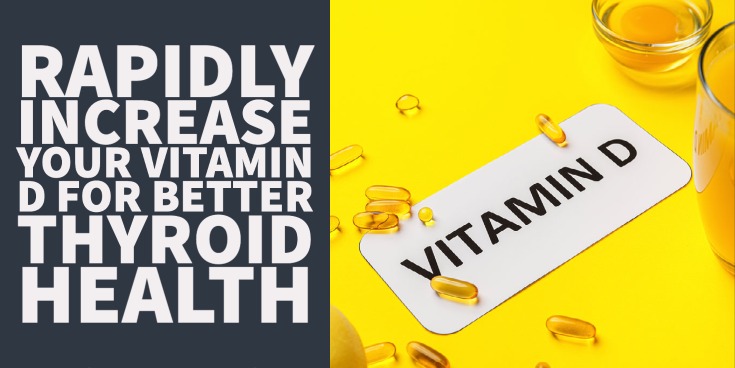One of the best things about iodine is that it’s an over-the-counter supplement available to almost everyone.
Iodine, as a therapy for thyroid disease, can be extremely effective and is within the reach of everyone reading this.
It’s cheap, readily available, and doesn’t require a prescription to obtain.
That being said, there are some potential downsides to the use of iodine, especially in the setting of existing thyroid disease.
In this article, we are going to explore the difference between iodine dosages and talk about which dose you should be using.
In addition, we are going to set the record straight on iodine and discuss why most people need it.
Iodine and Thyroid Disease
There is no shortage of controversy surrounding the use of iodine, especially in the setting of thyroid disease.
There are groups of people, who I still encounter to this day, who believe that iodine is a harmful nutrient or even worse, a toxin of some sort that will damage their thyroid if they take it.
This kind of logic stems probably from an incorrect interpretation of certain studies that show that there may be a link between the development of Hashimoto’s thyroiditis (1) and the use of iodine.
These studies have shown that as developed countries have increased their consumption of iodine the rates of Hashimoto’s have climbed in lockstep (2).
This has led many researchers (and doctors) to conclude that iodine is somehow responsible for this increased rate of thyroid disease.
But a deeper look at the research doesn’t really point to that conclusion.
Instead, it suggests that the development of Hashimoto’s thyroiditis is a complex disease with multiple moving parts.
And iodine supplementation, in the right setting and with the right nutrient deficiencies, may trigger an inflammatory process in the thyroid gland which can trigger Hashimoto’s thyroiditis.
But this is not the same thing as guaranteeing that using iodine will cause Hashimoto’s nor does it suggest that using iodine is harmful or should be avoided.
On the contrary, we actually know, and have scientific proof to back it up, that iodine is an essential nutrient for thyroid function (3).
Avoiding iodine, or becoming iodine deficient, is a quick way to CAUSE thyroid disease or worsen your existing disease.
The avoidance of iodine, even in the setting of Hashimoto’s thyroiditis, may actually be making your thyroid WORSE.
Whether or not iodine is helpful or harmful depends largely on your body and how you are using it.
What dose you are taking when you are taking it, and what you are taking it with matters a lot when it comes to using iodine.
We are going to have a discussion on each of these points and talk about how you can use iodine safely so that it doesn’t cause any problems.
Using it in this way may, on the contrary, actually improve your thyroid status and make you feel better.
I’ve found very few over-the-counter therapies that can have the potential positive impact on the thyroid as iodine can.
DOWNLOAD FREE RESOURCES
Foods to Avoid if you Have Thyroid Problems:
I’ve found that these 10 foods cause the most problems for thyroid patients. Learn which foods you should avoid if you have thyroid disease of any type.
The Complete List of Thyroid Lab tests:
The list includes optimal ranges, normal ranges, and the complete list of tests you need to diagnose and manage thyroid disease correctly!
3 Different Categories/Doses of Iodine Use
We know that humans have no way of producing iodine on their own.
Because of this, they MUST consume iodine either from their diet (or supplements, as the case may be).
Most dietary iodine comes from animals and plants that grow in the ocean where iodine is concentrated.
Because most people, especially in the United States, don’t consume sea vegetables (like kelp or nori) on a frequent basis, the government has fortified certain foods with iodine (4) to supplement.
The only problem is that most of these foods are not considered to be “healthy” and so may be avoided accidentally by people who are actually health conscious!
When you combine this with the fact that many individuals don’t consume sea vegetables and that many thyroid patients are weary or just scared of using iodine period, you get the perfect set-up for iodine deficiency even in developed countries.
There is a strong case for supplementation given these facts which is why we need to have a discussion on doses.
As I mentioned previously, how much iodine you take can dramatically have an impact on thyroid function (either positive or negative).
Take a dose too small and you may remain deficient.
Take a dose too high and you may cause inflammation or trigger an autoimmune process.
So which is the right dose?
There are really 3 categories of iodine use that most people are aware of.
Note: your current doctor is probably not aware of any of these, but they exist in the community and each has a following of people who support their use.
Low Dose Iodine
Low-dose iodine consists of doses of iodine within the “normal” RDI range.
The RDI (recommended daily intake) set forth by the Food and Nutrition Board is around 150-270mcg of iodine per day (5).
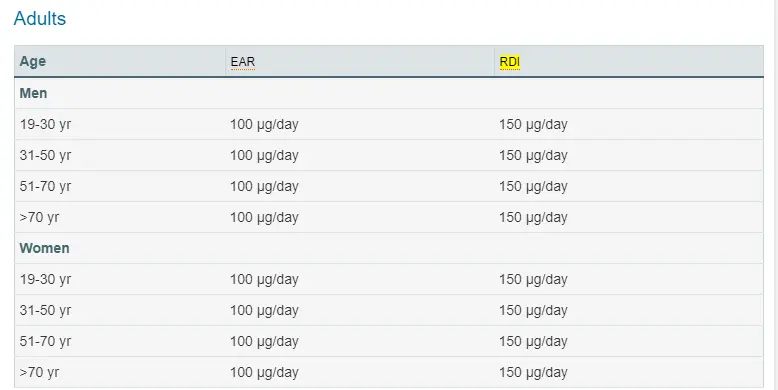
Some people get upset when I mention the RDA because they know that these ranges are not always accurate.
While that may be true for some nutrients, it’s not true for iodine.
The RDA for iodine is one that is grounded in real science and has been backed up by many studies.

These studies, based on populations that are monitored after iodine fortification in foods, show that iodine intake and iodine-induced problems present in a U-shaped pattern.
The risk of thyroid-related problems rises with low iodine intake and high iodine intake and declines with iodine intake in the range of 150 to 300 mcg per day.
From this data, we can infer that iodine dosing in this low dose range is the safest.
High dose Iodine
High doses of iodine, at least for the purpose of this article and discussion, range from 1 milligrams to 12.5 milligrams per day.
The range of iodine intake from 300 mcg per day all the way up to 1,000 mcg per day (1 milligram) falls somewhat in the “gray area” and doesn’t fit neatly into either low-dose or high-dose territory.
This area is probably fine for many people, but there’s no data to indicate that it’s safer than low doses.
As far as high-dose iodine is concerned, we do know that this level of iodine intake is associated with an increased risk of thyroid-related problems.
But this increased risk doesn’t stop many people from using it which is where things get tricky.
Many patients have found that high-dose iodine provides plenty of benefits and boosts thyroid function which is why they evangelize its use.
The main problem with their recommending high-dose iodine is not that it doesn’t work or won’t work, but more about the risks versus the rewards.
While is true that pushing higher doses of iodine may be beneficial for some, there’s a near equal amount of people who may experience significant (and permanent) thyroid-gland problems as a result of its use.
Unfortunately, though, I’ve found the pro-high-dose iodine camp to be somewhat dishonest in their evaluation of both the pros and the cons.
They do recognize that high-dose iodine can be beneficial, in some situations, but rarely ever talk about the side effects that it can cause.
They will use the Japanese population as an argument that high dose iodine is safe while simultaneously ignoring the population data which shows it’s harmful.
So even though this remains a potential option, beware of using it and beware of those who promote it.
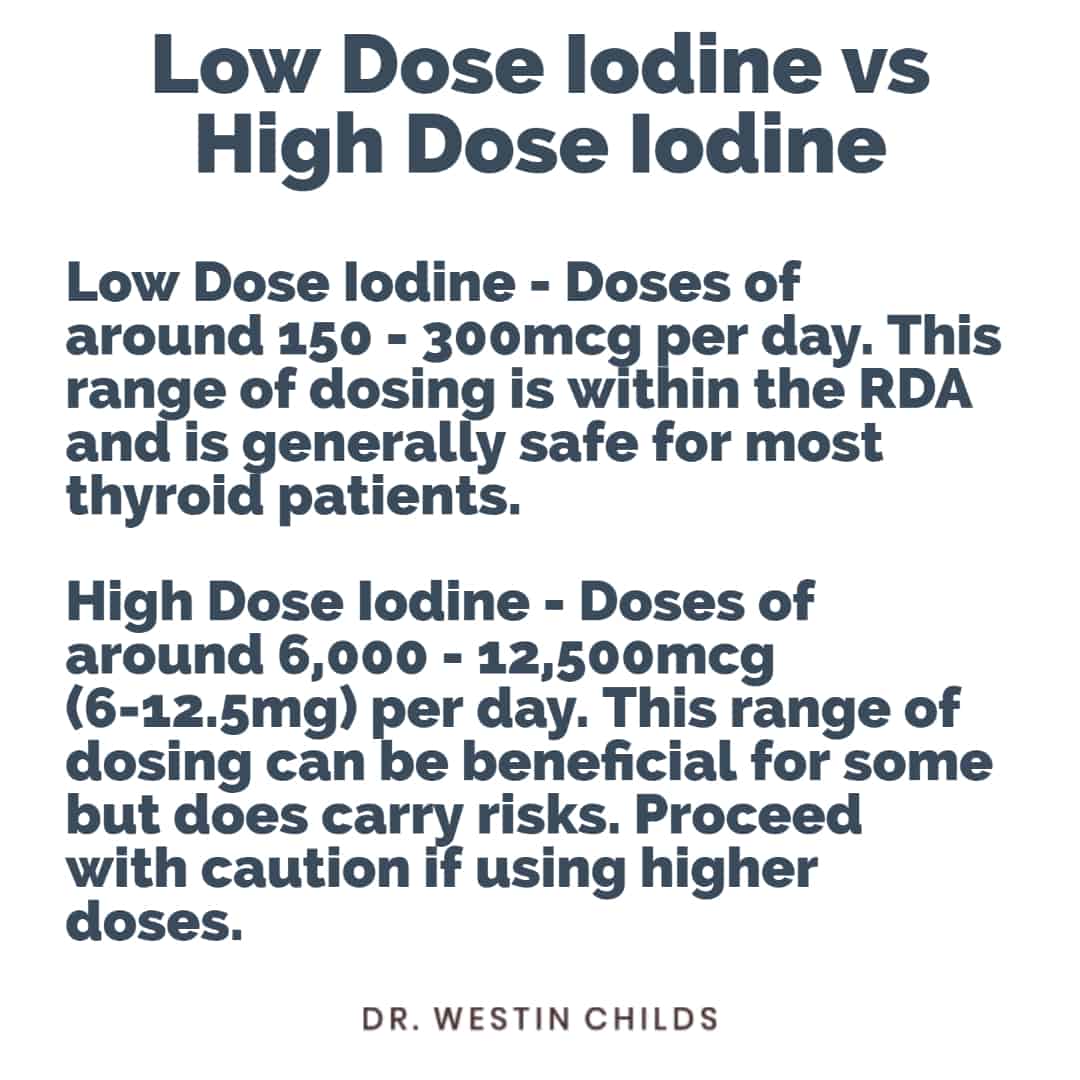
Very High Dose Iodine
I want to bring up very high-dose iodine, not because I recommend it but because you should be aware of it.
Unlike low-dose iodine and high-dose iodine, I do not believe that there is a time or place for the use of very high doses of iodine.
Very high doses of iodine would include doses that range from 25 mg (milligrams per day) all the way up to 50 mg (milligrams) per day.
These incredibly high doses are sometimes recommended by providers and forums around the internet but I do believe they can be dangerous.
I’ve seen numerous accounts of individuals who use doses in this very high range who CREATE thyroid problems seemingly out of nowhere.
These people are in the comment sections of my blog and YouTube videos and have been frequent enough to give me pause when recommending very high doses of iodine.
I simply don’t believe there is any evidence that incredibly high doses are any more effective than low-dose iodine or moderately high-dose iodine (in the 6mg to 12.5mg range).
The high doses of iodine are sufficient to help with repletion and should be preferred over very high doses of iodine.
If you are considering using these very high doses of iodine I would be very cautious of this approach.
Even if it isn’t harmful right away you have to ask yourself why would you opt for these doses over smaller safer doses of iodine.
Side Effects Associated with Iodine Use
Even when used in appropriate doses it’s still possible that you may experience certain side effects with iodine use!
These side effects do not mean that you need to stop using iodine but they may be an indication that you should back off on your dose.
Low doses of iodine don’t seem to have a strong effect on the thyroid gland but higher doses may start to impact both thyroid function and your thyroid gland.
The thyroid gland has a protective mechanism built in which blocks the update of excessive doses of iodine to prevent states of hyperthyroidism.
Moderately high doses of iodine can trigger this response and may explain specific changes in thyroid function in the short term.
But just because this can happen doesn’t mean you should be scared of it occurring.
Even when it does occur this effect tends to be minimal.
In addition, and at least in my experience, you are much more likely to experience positive side effects (such as increased production of thyroid hormone) than negative side effects.
Other side effects of iodine use may include:
- Fatigue
- Nausea
- Rashes/hives
- The sensation that your thyroid is swollen (if this occurs you should stop iodine supplementation)
These side effects can and should be minimal if you are using appropriate doses of iodine but you should be aware of them.
The side effects listed above tend to stem from the thyroid gland directly.
But it is my opinion that taking iodine by mouth may also have a direct impact on existing thyroid hormones that are already produced in your body.
This may be why some individuals who take iodine notice an almost immediate improvement in their symptoms.
The reason that this may occur is probably related to the structure of iodine and how it may displace other halides that share a similar electron outer shell.
It has been theorized (but not proven to my knowledge) that halides (bromine, chlorine, fluorine) may displace iodine on thyroid hormone molecules.
This may happen because all of these chemicals contain a similar electrical charge.
Normally, each thyroid hormone contains 4 (for thyroxine) or 3 (for triiodothyronine) iodine molecules on it.
But you can imagine that, in some instances, one or more of these iodine molecules may be displaced by these other chemicals.
If that occurs they may render the thyroid hormone molecule inactive which would then cause a mismatch between your thyroid lab tests and your clinical presentation.
Imagine if even a small number of thyroid molecules in your body were inactive.
Your lab tests might show that your serum levels of T4 and T3 were normal but they wouldn’t be able to tell you how well these molecules are working.
By giving yourself iodine, in supplement form, you could create an environment where these halides might be displaced from thyroid hormone molecules and render them active again due to competitive binding.
If this occurs (and I believe there’s good reason to believe it does) then the use of iodine could almost instantly improve thyroid function in your body through this mechanism.
It’s my belief that this mechanism not only explains why thyroid patients do better on higher doses of iodine but it also explains why some people feel almost immediately better when using it.
Is this happening in every patient? I don’t believe so but I do think it’s happening in more patients than we probably think.
And the reason I came up with this idea was because of my own experience.
When I used high doses of iodine I noticed breakouts in my skin that would appear and quickly disappear within a day or so.
And these skin changes were consistent with a condition known as bromoderma which is what occurs when your body eliminates excess bromide (a halide).
When it does occur I’ve seen patients tend to experience a quick rush of negative symptoms (flu-like symptoms, breakouts, acne, feeling fatigued, and so on) as the body attempts to eliminate these halides.
So if you’ve ever experienced these symptoms while taking iodine it may actually be a good thing related to a detox-like reaction and not a negative side effect or even a reason to stop using iodine.
What Dose Should You Take?
If you aren’t sure what dose to take then you can use these guidelines to help:
- As far as safety is concerned, you will optimize the benefits and minimize the risks by using a dose of iodine in the range of 150 to 300 mcg per day.
- Some people know that higher doses may provide even more benefits which is why they are constantly pushing the limits. If you want to push higher than 300 mcg per day, I do not recommend exceeding 1 milligram per day. This higher-end range is based on the average intake of the Japanese population which consumes around 1-3 milligrams (1,000 mcg to 3,000 mcg) on average.
- You can push doses higher than 3 mg per day (some people go as high as 12.5 mg, 25 mg, or even 50 mg) but I do not recommend this approach. It’s not that these higher doses don’t have benefits, but they come at an unacceptably high risk of side effects some of which may be permanent.
Personally, I get around 150 mcg per day with the use of supplements (to hit the bare minimum) and then get the remainder from whole food sources.
This approach ensures that I will never be deficient, but also allows for some wiggle room in the event that I eat iodine-rich foods.
Using Iodine with Selenium
I touched on this previously but I want to make sure we go into it in a little more detail here.
It’s important to understand that there is probably a connection between iodine use and damage to the thyroid gland but only in the setting of co-existing selenium deficiency.
Selenium is necessary for the production of powerful antioxidants such as glutathione.
A lack of selenium (selenium deficiency) may set you up for inflammation in the thyroid gland if you are also using iodine.
We even have studies to suggest this is the case (12).
But what’s interesting is that as long as you replete your selenium (and zinc and other nutrient deficiencies) before you take iodine this shouldn’t be an issue.
How do you know if you have sub-optimal selenium levels?
My way of thinking about nutrient deficiencies is simple:
If you have one nutrient deficiency then there is a very high probability that you have other nutrient deficiencies.
I operate under the assumption that you are deficient unless you are currently already using a broad multivitamin or if you’ve used a moderate dose of selenium or zinc recently.
If you haven’t then you should assume that you are deficient and you should use these nutrients concurrently (meaning at the same time) as iodine.
I also wouldn’t recommend that you look solely at your serum (blood) markers as a way of assessing whether you are deficient or not.
Blood tests are not an accurate way to assess iodine deficiency or most other nutrient deficiencies and may lead you astray.
So what should you do?
I would recommend you simply supplement with a good thyroid-friendly multivitamin either before you take iodine or at the same time.
A good multivitamin will have all of the necessary micro-nutrients and vitamins that your thyroid gland needs and will provide adequate protection against iodine-induced damage.
You can probably find all of these ingredients as standard in most high-quality multivitamins (but be wary of store-bought multivitamins).
Conclusion
The one thing I want you to get out of this article is the fact that iodine plays an important role in thyroid hormone regulation and it should not be avoided by the majority of patients with thyroid disease (even those with Hashimoto’s).
Dosing of iodine should be personalized and, if possible, addressed with your current physician.
You should be aware, however, that many physicians are probably not aware of the nuances associated with iodine supplementation and may only recommend dosing in the low range or RDI range.
For many of you, starting out at higher doses (in the 6 mg to 12.5mg range) may provide an almost immediate benefit and help improve thyroid stores.
For those who are sensitive, starting out in the lower range (150mcg to 270mcg per day) may be a safer alternative.
Now I want to hear from you:
Are you currently taking iodine?
Have you noticed any improvement in your symptoms?
Have you noticed any negative symptoms?
What dose are you currently taking?
Leave your questions or comments below!
Scientific References
#1. https://www.ncbi.nlm.nih.gov/pubmed/1345585
#2. https://www.ncbi.nlm.nih.gov/pmc/articles/PMC4192807/
#3. https://www.ncbi.nlm.nih.gov/pmc/articles/PMC3063534/
#4. https://www.researchgate.net/publication/51618464_Iodine_fortification_Why_when_what_how_and_who
#5. https://www.nrv.gov.au/nutrients/iodine
#6. https://www.ncbi.nlm.nih.gov/pubmed/11396709
#7. https://www.ncbi.nlm.nih.gov/pmc/articles/PMC4049553/
#8. https://www.ncbi.nlm.nih.gov/pmc/articles/PMC3204293/
#9. https://www.ncbi.nlm.nih.gov/pmc/articles/PMC2837454/
#10. https://www.ncbi.nlm.nih.gov/pmc/articles/PMC3204293/
#11. https://www.ncbi.nlm.nih.gov/pmc/articles/PMC3013295/
#12. https://www.ncbi.nlm.nih.gov/pmc/articles/PMC2721352/

